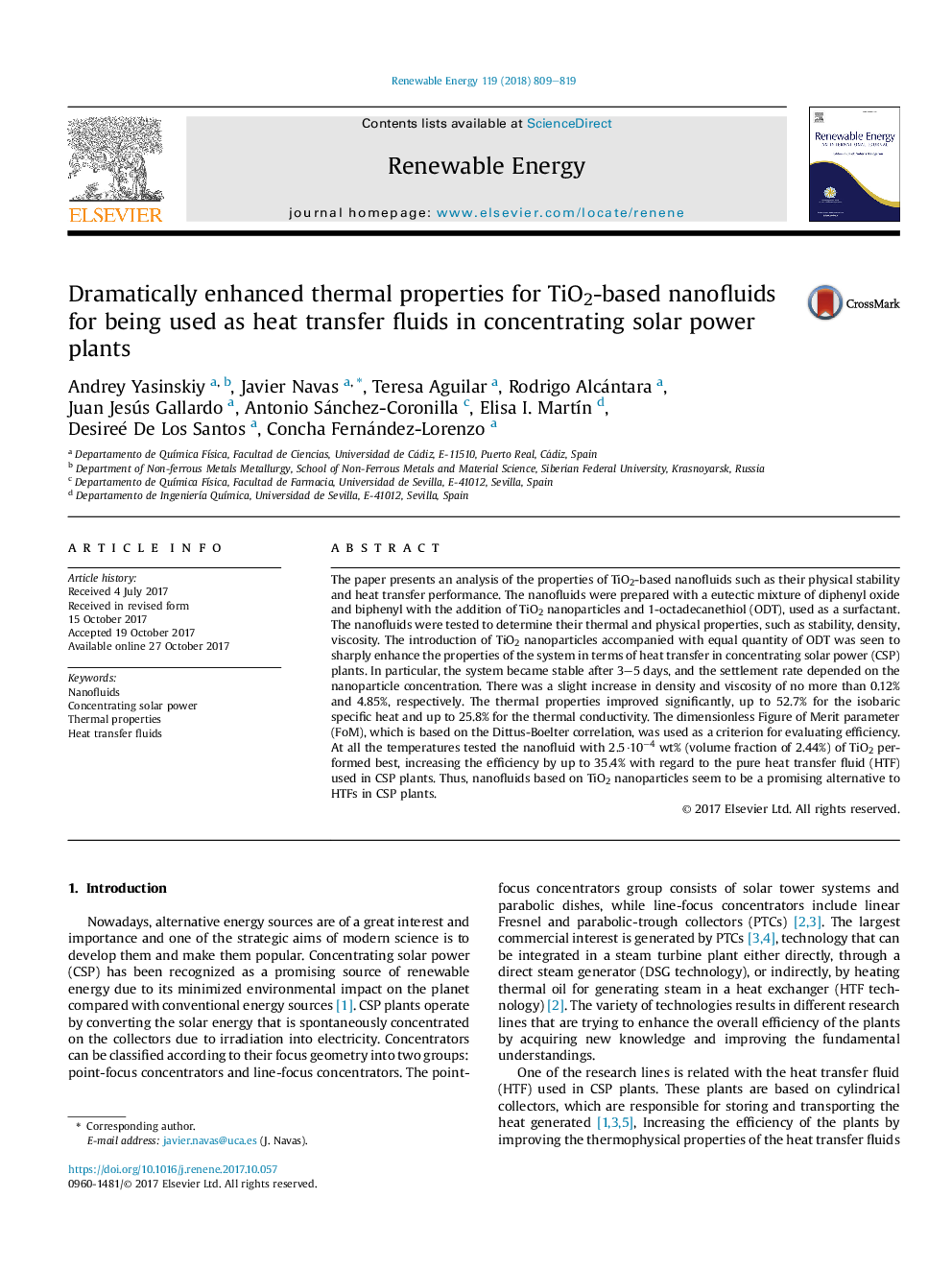| Article ID | Journal | Published Year | Pages | File Type |
|---|---|---|---|---|
| 6765032 | Renewable Energy | 2018 | 11 Pages |
Abstract
The paper presents an analysis of the properties of TiO2-based nanofluids such as their physical stability and heat transfer performance. The nanofluids were prepared with a eutectic mixture of diphenyl oxide and biphenyl with the addition of TiO2 nanoparticles and 1-octadecanethiol (ODT), used as a surfactant. The nanofluids were tested to determine their thermal and physical properties, such as stability, density, viscosity. The introduction of TiO2 nanoparticles accompanied with equal quantity of ODT was seen to sharply enhance the properties of the system in terms of heat transfer in concentrating solar power (CSP) plants. In particular, the system became stable after 3-5 days, and the settlement rate depended on the nanoparticle concentration. There was a slight increase in density and viscosity of no more than 0.12% and 4.85%, respectively. The thermal properties improved significantly, up to 52.7% for the isobaric specific heat and up to 25.8% for the thermal conductivity. The dimensionless Figure of Merit parameter (FoM), which is based on the Dittus-Boelter correlation, was used as a criterion for evaluating efficiency. At all the temperatures tested the nanofluid with 2.5·10â4 wt% (volume fraction of 2.44%) of TiO2 performed best, increasing the efficiency by up to 35.4% with regard to the pure heat transfer fluid (HTF) used in CSP plants. Thus, nanofluids based on TiO2 nanoparticles seem to be a promising alternative to HTFs in CSP plants.
Related Topics
Physical Sciences and Engineering
Energy
Renewable Energy, Sustainability and the Environment
Authors
Andrey Yasinskiy, Javier Navas, Teresa Aguilar, Rodrigo Alcántara, Juan Jesús Gallardo, Antonio Sánchez-Coronilla, Elisa I. MartÃn, Desireé De Los Santos, Concha Fernández-Lorenzo,
